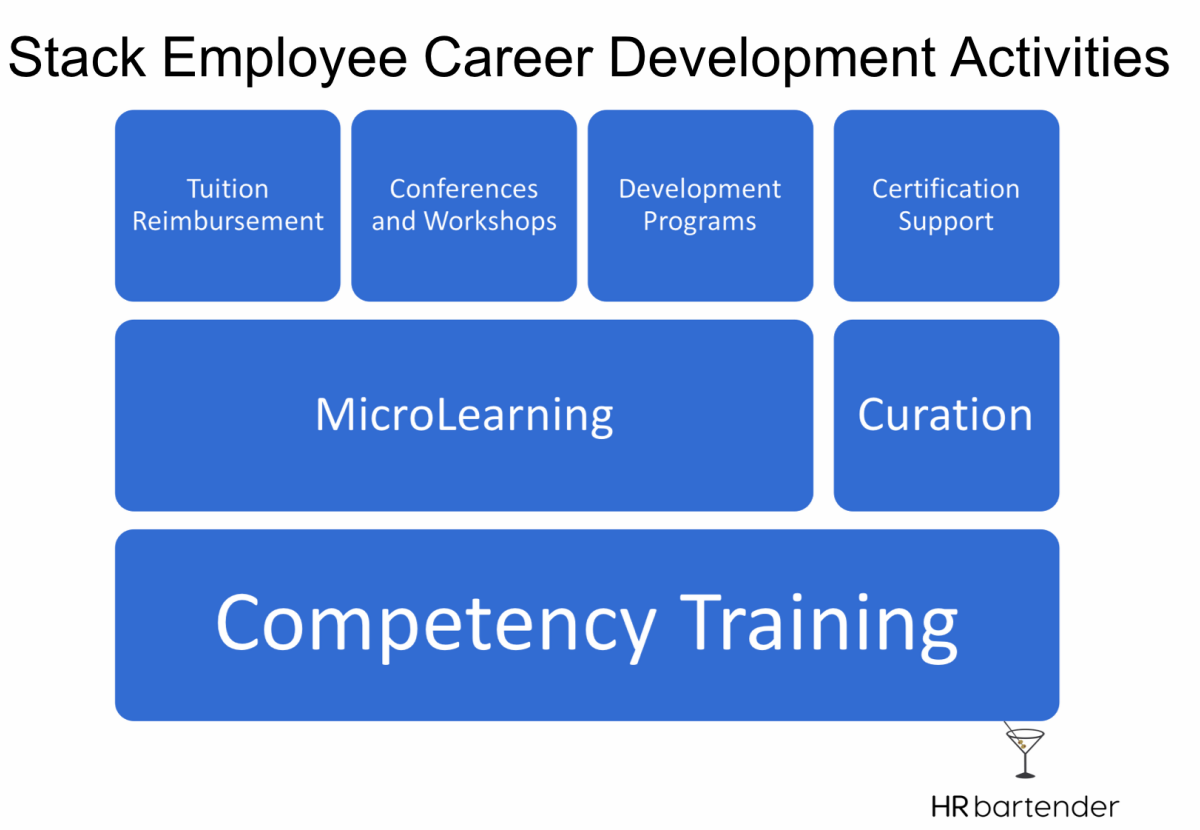Stack Employee Career Development Activities
At this year’s Association for Talent Development (ATD) annual conference, the organization shared a new career development framework for talent development professionals. It’s really good and very intuitive, so I suggest you check it out to get some solid information about how to develop your skills.
I would also suggest checking out the framework because I think we can use it in designing a career development framework for our employees. I really like flexible models and I think this is one. While the ATD framework focuses on talent development, I can see the education options becoming a framework for any role. Here are the seven career development levels that would make for a very comprehensive learning program.
- Competency training. This is the traditional skills and knowledge training that employees need to effectively do their jobs every day. I’d like to think this happens, but I’m not naïve. Sometimes companies can’t or won’t make the investment. And we all know that has a detrimental impact on the bottom-line.
- MicroLearning. There are moments when we just need a couple minutes of instruction and we’re good to go. I think back to when I needed to truss a chicken for a recipe. I went on YouTube, found a 2-minute video, trussed the chicken, and I was done. MicroLearning has a place in orientation, onboarding, and refresher training.
- Curation. Learning doesn’t have to sit entirely in the human resources department. Employees can learn from each other. Employees can learn through self-learning activities. But that means giving employees the tools to curate information well.
- Tuition support. I think of this two-fold. Both in terms of the very popular employee tuition reimbursement benefit but the emerging benefit of student loan reimbursement. I realize this isn’t always 100 percent financially supported by the company, but under the right circumstances, it can be valuable.
- Conference and workshops. While attending conferences isn’t often coordinated with learning and development departments, that doesn’t mean it shouldn’t be considered learning. I’m also not suggesting that training departments start approving conference attendance, because there are other reasons that employees attend. Just don’t forget about the valuable educational component.
- Certification support. A growing number of professions have certifications and credentials that allow employees to demonstrate mastery. This can be a great way for organizations to support employee development. It can also help with processes like replacement and succession planning.
- Development Programs. Speaking of replacement and succession planning, organizations have to think about providing employees education for the jobs they have right now AND the jobs they will hold in the future.
As you’re thinking about employee training and development, ask yourself, “What types of learning do we offer employees?” and “Are we providing learning opportunities that help employees now as well as in the future?” This type of framework can also be something organizations could share with employees during orientation and onboarding to show how the company makes investments in an employee’s success.
So, think about stacking career opportunities. It’s a terrific visual way to share with employees the company’s learning programs.
15